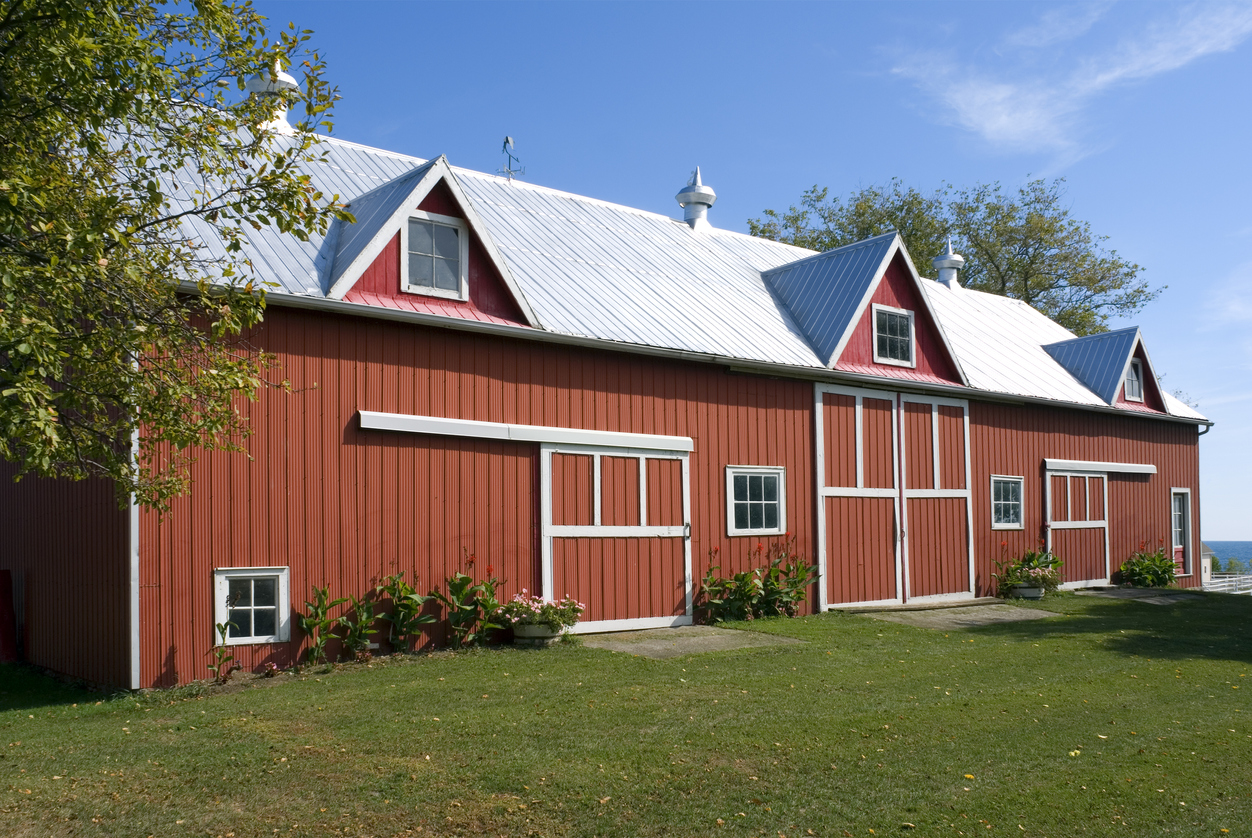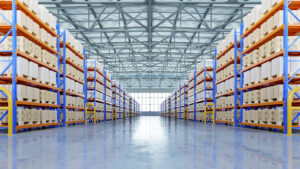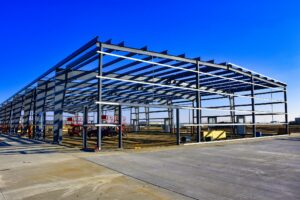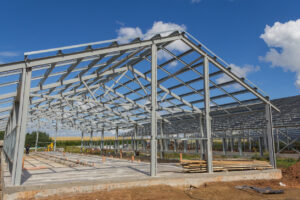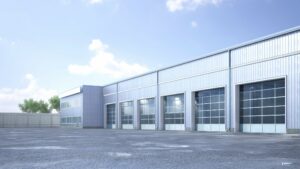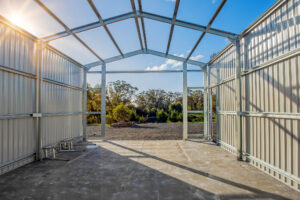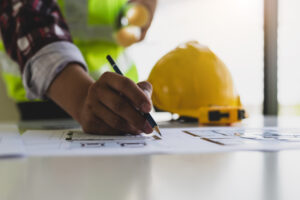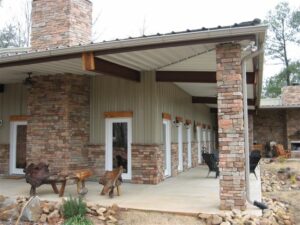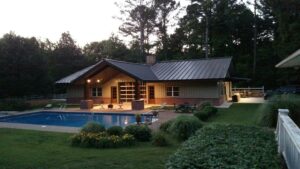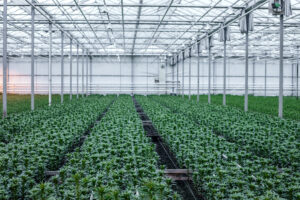Metal barns have become a popular choice for property owners looking for durable and cost-effective storage solutions. Whether you’re planning to use it for agricultural purposes, storing vehicles and equipment, or as a workshop space, understanding the costs of metal barns is crucial for budgeting, design and making informed decisions on the type.
In this article, we will break down the costs of a metal barn, covering everything from the basics to ongoing maintenance expenses and cost comparisons with other barn types.
Table of Contents
- Understanding the Basics of Metal Barns
- Initial Costs of a Metal Barn
- Ongoing Maintenance Costs
- Cost Comparisons with Other Barn Types
- Factors Influencing the Cost of a Metal Barn
- Budgeting and Financial Planning
- Conclusion
- Frequently Asked Questions
Understanding the Basics of Metal Barns
Before diving into the costs, let’s first familiarize ourselves with the basics of metal barns.
Metal barns are structures made primarily of steel or metal alloys, offering excellent durability, versatility, and resistance to pests, rot, and fire.
They are available in a variety of sizes and designs, allowing you to customize them according to the specific need of your metal barn.
When it comes to metal barns, there are different types to choose from, each with its features, design and advantages.
Did You know?
The average farm size increased by 5% from 441 acres in 2017 to 463 acres in 2022.
Types of Metal Barns
- Agricultural Metal Barns: Designed specifically for agricultural purposes, these barns typically have open floor plans, providing ample space for storing livestock, equipment, and supplies. With their sturdy construction, they can withstand the harsh conditions of a farm, ensuring the safety of your valuable assets.
- Storage Metal Barns: Ideal for storing vehicles, tools, and machinery, storage metal barns often come with roll-up doors and multiple access points for easy maneuverability. These metal barns are designed to maximize storage space, allowing you to keep your belongings organized and protected.
- Workshop Metal Barns: If you’re looking for a dedicated workspace, workshop metal barns offer the perfect solution. They provide a well-lit and ventilated environment for various projects. Whether you’re a hobbyist or a professional, these barns offer the space and functionality you need to bring your ideas to life.
Check out: A Guide To Metal Horse Barns
Key Features of Metal Barns
Regardless of the type you choose, metal barns come with a range of key features that add to their functionality and longevity.
- Roofing: Metal barns typically have durable metal roofing, which is resistant to weather elements and requires minimal maintenance. This means you can rest easy knowing that your barn will withstand heavy rain, snow, and even hail, without compromising its structural integrity.
- Structure: The framework of metal barns is constructed using high-quality steel, ensuring stability and durability, even in challenging weather conditions. With their strong foundation, these barns can withstand strong winds and heavy loads, providing you with a reliable and long-lasting structure.
- Doors and Windows: Depending on your requirements, metal barns can be equipped with various door and window options, allowing for easy access and natural light. From sliding doors to overhead doors, you can choose the style that suits your needs. Additionally, the inclusion of windows not only enhances the aesthetics of the barn but also allows for ventilation, creating a comfortable environment inside.
With their versatility, durability, and customizable options, metal barns have become a popular choice for various applications.
Whether you need a space to store your farming equipment, protect your vehicles, or pursue your creative endeavors, a metal barn can provide you with the perfect solution.
So, if you’re considering investing in a metal barn, take the time to explore the different types available and consider the key features that will best meet your needs.
With a metal barn, you can have peace of mind knowing that you have a reliable and functional structure that will stand the test of time.
Check out: Exploring Barn Roof Types And Materials
Initial Costs of a Metal Barn
When planning for a metal barn, it’s crucial to consider the initial costs. These costs primarily include material, labor, and equipment expenses.
Before embarking on the construction of a metal barn, it’s important to delve deeper into the various cost components involved to ensure a well-informed budgeting process.
Material Costs
The material costs will depend on the size of the barn, the chosen type of metal, and any specific customization options.
A rough estimate of materials for a metal barn typically ranges from $17 to $20 per square foot. This price can increase when including the installation
While steel is a popular choice due to its durability and affordability, other metal alloys may be used for specific purposes. It’s advisable to obtain quotes from multiple suppliers to ensure competitive pricing.
Additionally, the quality and thickness of the metal sheets can impact the overall cost. Opting for higher-grade materials may increase the initial investment but can result in a more robust and long-lasting structure, potentially reducing maintenance expenses in the long run.
Labor Costs
Another significant component of the initial costs is labor. The complexity of the metal barn design, its size, and its location can all impact labor expenses.
Hiring experienced professionals is essential for the successful construction of your metal barn, ensuring structural integrity and compliance with local building codes.
Skilled labor is crucial not only for assembling the metal structure but also for tasks such as welding, insulation installation, and ensuring proper ventilation.
Investing in a proficient workforce can contribute to a smoother construction process and a high-quality result.
Pro tip:
On average, labor costs range from $5 to $10 per square foot depending on complexity. This includes tasks such as site leveling, construction, and basic installations. However, if you hire professionals on an hourly basis, general contractors may charge between $50 to $150 per hour.
Equipment and Tool Costs
Depending on the complexity of the project, you may need to invest in specific equipment and tools. These costs can include items such as cranes, scaffolding, and power tools.
Alternatively, you can consider renting or leasing the necessary equipment to reduce upfront expenses.
Moreover, safety equipment such as harnesses, helmets, and gloves should not be overlooked.
Prioritizing the well-being of the construction crew by providing adequate safety gear can prevent accidents and delays, ultimately impacting the overall project costs.
Ongoing Maintenance Costs
Once your metal barn is built, it’s crucial to factor in ongoing maintenance costs. Regular maintenance and potential repair expenses ensure the longevity and functionality of your investment.
The maintenance cost for a metal barn is relatively low compared to traditional wooden barns.
On average, you can expect to spend around 1% to 3% of the total cost of your metal barn annually on maintenance. This includes routine tasks such as cleaning, inspecting, and making minor repairs.
Ensuring the upkeep of your metal barn involves more than just the initial construction. It’s a long-term commitment to preserving the structural integrity and appearance of your building.
Understanding the various aspects of maintenance can help you plan and budget effectively for the future.
Regular Maintenance Expenses
Scheduling regular maintenance activities, such as cleaning the roof, checking for leaks, and inspecting the structural components, helps identify and address potential issues before they become significant problems.
Regular maintenance expenses may include cleaning supplies, replacement filters, and professional inspection services.
Investing in high-quality cleaning products specifically designed for metal surfaces can help prevent corrosion and maintain the aesthetic appeal of your barn.
Regular inspections by qualified professionals can also detect early signs of wear and structural weaknesses, allowing for timely repairs and avoiding more extensive damage.
Potential Repair Costs
Despite their durability, metal barns may require occasional repairs due to wear and tear, damage from severe weather conditions, or accidents.
Repair costs can vary depending on the extent of the damage and the materials required. Having a contingency fund set aside for unexpected repairs is highly recommended.
When budgeting for potential repair costs, consider factors such as the age of your metal barn, the quality of materials used in its construction, and the environmental conditions it is exposed to.
Regularly assessing the condition of your barn and addressing minor issues promptly can help prevent more extensive damage that may incur higher repair expenses.
Cost Comparisons with Other Barn Types
When considering the costs of a metal barn, it’s essential to compare them with other barn types to make an informed decision.
Let’s take a look at how metal barns measure up against wood barns and brick barns.
Before deciding on the type of barn to construct, it’s crucial to delve deeper into the specific characteristics and considerations that come with each material choice.
Understanding the nuances can help you make a well-informed choice that aligns with your budget, needs, and long-term goals.
Wood Barns vs. Metal Barns
Wood barns have a traditional appeal and can blend seamlessly with rural landscapes. However, they tend to require more maintenance, are susceptible to pests and rot, and may not offer the same level of durability as metal barns.
While wood barns require upfront costs for materials and labor, ongoing maintenance expenses can add up over time.
Furthermore, the aesthetic appeal of wood barns can be a significant factor for many property owners.
The natural warmth and charm of wood can create a cozy and inviting atmosphere, making it a popular choice for those looking to combine functionality with visual appeal.
Brick Barns vs. Metal Barns
Brick barns are known for their sturdiness and longevity. However, constructing a brick barn involves significant material and labor costs. Additionally, their lack of flexibility and customization options can be a limiting factor.
Metal barns, on the other hand, offer a cost-effective solution without compromising on durability and customization possibilities.
Moreover, the timeless elegance of brick structures can add a touch of sophistication to your property.
The solid and enduring nature of brick barns not only provides structural integrity but also conveys a sense of permanence and prestige, making them a preferred choice for those seeking a classic and timeless architectural style.
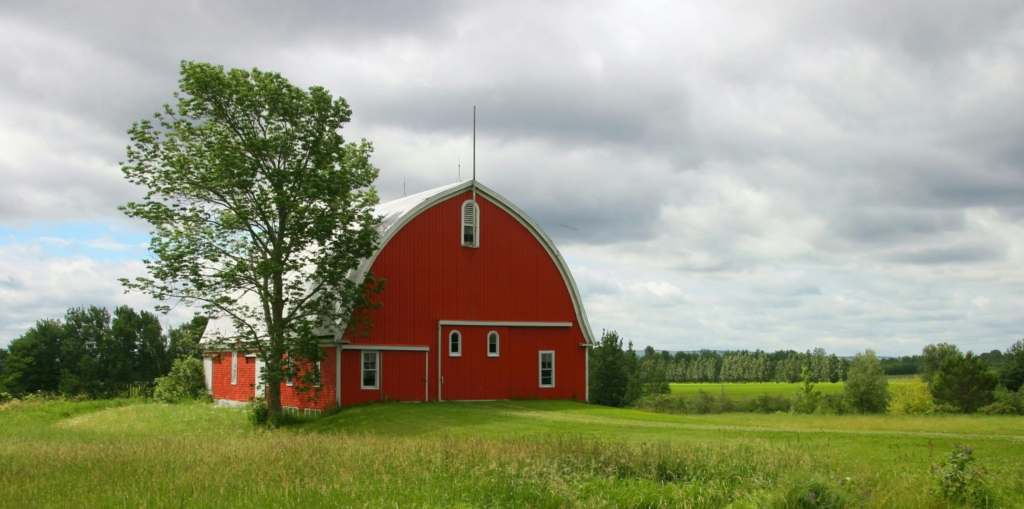
Factors Influencing the Cost of a Metal Barn
When planning for the construction of a metal barn, it’s essential to consider various factors that can influence the overall cost. Understanding these elements can help you make informed decisions and stay within your budget.
Size and Design of the Metal Barn
The size and design of your metal barn are significant cost determinants. Larger barns not only require more materials but also entail longer construction times and potentially more labor. The complexity of the design, such as additional features like mezzanines or intricate roof structures, can also impact costs of metal barns.
Location and Local Labor Rates
Where you choose to build your metal barn can greatly affect the expenses involved. Areas with higher local labor rates will naturally result in increased construction costs. Moreover, different regions have varying building regulations and permit costs that can add to the overall project expenses.
Customization Options
Adding customization options to your metal barn can enhance its functionality and visual appeal, but it comes at an additional cost. Features like extra doors, windows for natural light, insulation for climate control, or electrical systems for convenience all contribute to the final price tag. It’s important to carefully consider which customizations are essential for your needs and budget accordingly.
Considering the long-term benefits and durability of a metal barn is crucial when evaluating its costs.
Understanding not only the initial investment but also the maintenance expenses and comparing the costs with other types of barns can help you make a well-rounded decision that aligns with your financial plan and specific requirements.
Did You Know?
In 2024, there are approximately 1.9 million farms in the US, a decline of 6.9% from 2017. These farms cover about 880.1 million acres, representing 39% of all US land.
Budgeting and Financial Planning
Developing a realistic budget demands careful attention to not only the immediate costs associated with the construction, purchase, and installation but also the long-term maintenance and potential modifications that might be needed.
Accurately assessing your financial capacity and understanding the full scope of expenses will lead to more informed decisions and ensure that the investment in a metal barn adds value to your property without causing undue financial strain.
One often overlooked aspect of budgeting for metal barns is the importance of including contingency funds.
Unforeseen costs can and often do arise during construction projects. Whether it’s unexpected ground preparation work, delays due to weather, or changes in material costs, having a contingency fund ensures that you’re prepared for the unexpected.
Typically, it’s wise to allocate an additional 10-20% of the total project cost to this fund. This safety net allows you to handle surprises without having to compromise on the quality of your metal barn or halt the project altogether.
Setting a Realistic Budget
When planning to invest in metal barns, it is crucial to establish a realistic budget to avoid financial strain.
This involves considering various factors like material costs, labor, design specifications, and any additional features you might want for your metal barn.
Exploring financing options is also a key part of this planning process. Options such as loans, grants, and other financing methods are available to help manage the costs. Each financing option comes with its own set of pros and cons.
For instance, loans might provide the immediate funds needed but come with interest payments, whereas grants could offer non-repayable funds but with strict eligibility criteria.
Cost-Saving Tips
Finding ways to reduce costs without sacrificing quality is crucial for staying within budget and ensuring long-term durability when building metal barns.
One effective strategy is to consider purchasing materials in bulk. Buying in bulk often comes with price advantages, significantly lowering the overall expense of materials needed for the project.
Additionally, keeping an eye out for sales on high-quality materials can lead to substantial savings. Taking advantage of these opportunities can make a big difference in managing costs effectively while maintaining the desired quality of the barn.
Conclusion
Metal barns offer an attractive option for property owners seeking a cost-effective and durable storage solution. By breaking down the costs of a metal barn, we have explored the initial expenses involved in materials, labor, and equipment.
Furthermore, we have discussed the ongoing maintenance costs, compared metal barns with wood and brick barns, and highlighted the factors that influence the overall cost.
Armed with this knowledge, you can confidently plan your metal barn project and make informed decisions based on your budget and needs.
SteelCo has more than 23 years of experience in dropshipping customizable steel building kits for building and roofing needs nationwide.
Our team of experts with 100+ years combined experience can provide specialized assistance with initial concept/design, navigating construction timelines, and providing stamped engineering plans to simplify the process of obtaining necessary building permits and licenses.
Learn more about our steel agricultural buildings or barndominiums.
—————————–
Frequently Asked Questions
What are the typical material costs to build a metal barn?
The cost of building a metal barn can vary widely depending on factors such as size, materials, design complexity, and location. On average, you can expect to pay between $17 and $20 per square foot for steel building materials. For example, a basic 40×60 (2,400 Sq ft) metal barn might cost around $40,800 to $48,000.
How long does it take to build a metal barn?
The construction time can vary based on the size and complexity of the barn. On average, it can take a few weeks to a few months (18 weeks).
Should I get a permit for my metal barn?
Permitting requirements can vary depending on your location and the size and intended use of your barn. In most cases, a permit will likely be required. The cost for permitting is usually not included in the base price of the metal barn and should be factored into your budget.
Are metal barns more expensive than wooden barns?
Initially, metal barns might be more expensive due to the cost of steel, but they typically require less maintenance and have a longer lifespan, which can make them more cost-effective in the long run compared to wooden barns.









